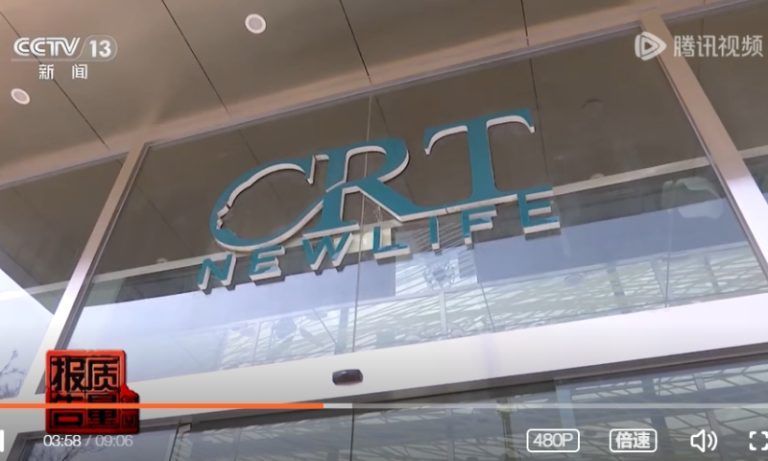Photo: Video clip from CCTV News
A woman who spent 546,800 yuan ($75,538) on breast augmentation discovered the fillers contained proteins derived from camels, bats and chimpanzees, and the case has sparked heated debate online. It has also shed light on safety concerns in China’s fast-growing cosmetic surgery industry.
In 2022, Lanlan was admitted to a cosmetic and cosmetic surgery institution called “Chu Mei Ren” in Beijing, which advertised a breast augmentation technique that did not involve surgery or synthetic implants, instead using the consumer’s own blood tissue to culture, promising 20- Small procedure resulting in bigger breasts.
The director of the institution claimed that their technique held an exclusive national patent and normally charged 1.94 million yuan for the procedure. However, through a referral discount, Lanlan was able to negotiate the fee down to 546,800 yuan.
According to Lanlan, the operation took only 20 minutes, leaving no obvious scars. However, over time, she noticed asymmetry and experienced persistent discomfort in her breasts.
During a routine medical exam, a breast ultrasound revealed foreign bodies inside her breast. Subsequent tests at two different hospitals confirmed the presence of unknown injected fillers and non-native tissue, as well as implants.
Lanlan underwent further surgery, at an additional cost of 200,000 yuan, to remove the foreign substances. Despite extensive cleaning, traces of fillers remained, posing potential health risks.
Analysis of the fill samples revealed proteins from various animal sources, including camels, bats and chimpanzees. Lanlan, now seven months pregnant, is experiencing anxiety about breastfeeding due to complications from her breast augmentation surgery.
In addition, Lanlan’s mother also underwent the same procedure at the same institution, spending over 600,000 yuan, and also experienced chest pain and deformities.
The surgeon who operated on Lanlan was found to be a general surgeon at a Beijing hospital with no record of multiple institutional practices, violating regulations requiring such a record, according to CCTV.
Recently, CCTV reporters visited the Chu Mei Ren Foundation again to investigate, but found it closed.
This case sheds light on safety concerns in China’s fast-growing cosmetic surgery industry. According to data released by the National Health Commission in January, there are a total of 18,584 compliant medical aesthetic institutions in China (excluding public institutions and private integrated ones).
Data from the iResearch institute showed that as of 2020, only 12 percent of medical aesthetic institutions in China were legally compliant, with more than 80,000 “black institutions” operating. Law-abiding doctors accounted for only 24 percent, while the number of illegal practitioners is over 100,000.
Regulators in China have stepped up their oversight of the medical aesthetics industry. On April 9, the State Administration for Market Regulation issued a notice announcing the launch of a national campaign from April to November 2024 to regulate advertising in key sectors, including the medical aesthetics industry, which will target on unauthorized ads that promote unrealistic beauty standards and will fight platforms and influencers that promote illegal medical aesthetics during live streams.
In May 2023, 11 government agencies, including the State Administration for Market Regulation, jointly issued guidelines arguing that cosmetic procedures should fall under medical activities, requiring compliance with health care laws.
Increased oversight of the medical aesthetics industry aims to regulate registration, verify qualifications and share information, as well as curb illegal practices and ensure public safety.
Global Times

